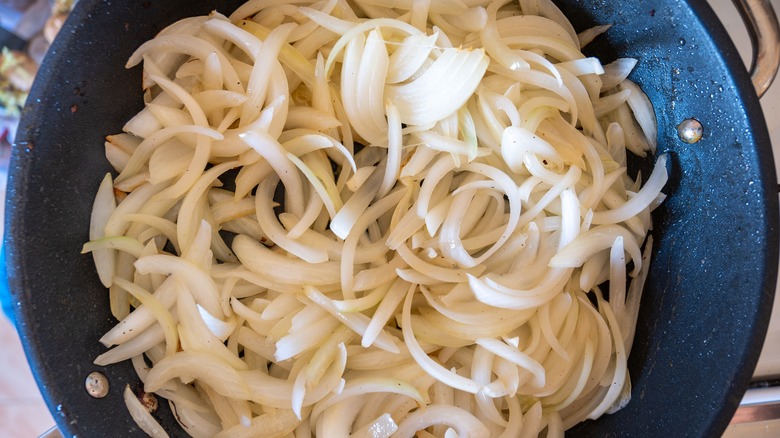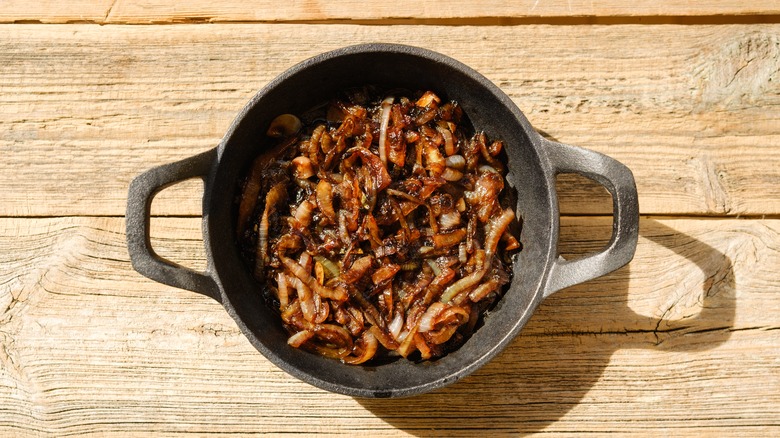The Best Pan For Caramelizing Onions
Caramelizing onions is one of those kitchen tasks that's easy to write off as a chore you don't have time for. Like roasting garlic, the process is time-consuming and requires hanging out over a hot stove for more than a few minutes. But also like roasting pungent garlic, there's a huge payoff waiting for you at the end. The task of caramelizing the regular old onion pays off in spades with big, rich flavor that makes culinary triumphs like a heavenly French onion soup possible.
Done wrong, though, and you can spend an hour in the kitchen only to wind up with a disappointing mass of burnt, crispy onions. Important as it is to know which onions to use, how to slice 'em, the correct heat and prep methods, etc., the vital first rule for successful caramelized onions has to do with the pan you cook them in. No surprises, but it's the trusty cast iron skillet that rises to the top of the list.
A mainstay in kitchens for hundreds of years, one might argue that no kitchen tool is more valuable than a well-seasoned, slick cast iron skillet, which can handle anything from pancakes to cornbread and will perfectly caramelize onions into a soft, sweetened pile of goodness. Cast iron is king because a well-sized pan can handle the piles of onions, cook them evenly with uniform heat distribution, and allow for a layer of fond to stick to the pan — which is a very good thing.
Cast iron pans develop a flavorful fond
In most cooking contexts, non-stick is a positive descriptor. These surfaces make cleanup easy and prevent food from becoming glued on and impossible to flip. But in the case of beautifully caramelized onions, sticking is actually a vital part of the process.
Fond, which refers to the jammy, sticky bits that become glazed onto the bottom of the pan, is not something to waste. Scraping it off and working the browned bits into the onions as they cook imparts the mass of slices with extra caramelized flavor (just a bit of vinegar helps deglaze the fond from the pan). The slick surface of a non-stick skillet doesn't allow for sticking — which is kinda the whole point — and vigorous scraping isn't something you can safely do on the surface of a Teflon-coated pan, anyway. Sturdy cast iron — along with stainless steel or a Dutch oven, as good secondary options — holds up to the process and allows for fond to develop just as you want it to.
Once you have your onions in your trusty cast iron skillet, relax and enjoy the lengthy but rewarding process — you can't rush good caramelized onions, so resist the urge to take potential shortcuts like adding baking soda that can compromise texture and taste. The task is an art and the sweet reward will be well worth it.

